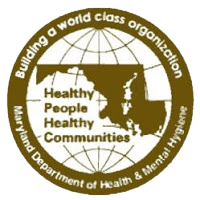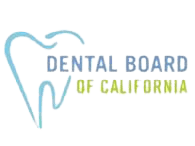Introduction
Effective in 1988, OSHA (The Occupational Safety and Health Administration) expanded protection under its hazard communication standard, 29 CFR 1910.1200, to include all workers exposed to hazardous substances in all industrial sectors, not just those in the manufacturing sector covered under the original standard. Thus, the workplaces covered by the OSHA act expanded from manufacturing only to the end user of hazardous materials. In the health care field, this can include physicians, dentists, laboratories, hospitals, etc.
To see a copy of the standard, click here:
Hazard Assessment
Employers must prepare a list of all hazardous chemicals in the workplace. When the list is complete, it should be checked against the collected MSDSs that the employer has been sent. If there are hazardous chemicals used for which no MSDS has been received, the employer must write to the supplier, manufacturer or importer to obtain the missing MSDSs.
**note: OSHA’s definition of hazardous chemicals is very broad and many chemicals may be defined as hazardous although you may not recognize them as such.
Labels and other forms of warning
The program coordinator will ensure that all hazardous chemicals are properly labeled and updated, as necessary. Labels should list, at least, the chemical identity of the material, appropriate hazard warnings, and the name and address of the manufacturer or other responsible party. Containers labeled by the manufacturers do not require additional labels. The manufacturer is responsible for properly labeling the original container. When the chemicals are transferred to other containers (secondary containers) to be used at a later time or by other workers these containers need to be labeled. Examples are containers of alcohol, bleach, disinfectant, and radiographic chemicals such as developer and fixer solutions that are transferred from the original containers. Copies of the original labels can be used to label these containers. Two examples on how to prepare a label for a secondary container (if photocopying the original label is not feasiblare provided at the end of this section.
If you transfer chemicals from a labeled container to another container that is intended only for your immediate use, no labels are required on the second container.
The OSHA regulation exempts FDA-regulated drugs, and FDA-regulated professional products such as medical and dental devices from labeling requirements. Drugs that are in solid final form for direct administration to the patient are also exempted from the labeling requirement.
Preparing labels for secondary containers
The Hazard Communication Standard requires that hazardous chemicals be labeled if they are transferred from their original container to an unlabeled secondary container. Labels should include the
product name.
chemical identity of the material.
appropriate hazardous warnings.
name and address of the manufacturer.
Definitions of Selected Hazard Terms
Material Safety Data Sheets
Material Safety Data Sheets (MSDSs) are detailed information bulletins prepared by the manufacturer or supplier of any product that contains a chemical deemed to be hazardous. The MSDS describes the physical and chemical properties of the chemical, the physical (e.g., the potential for explosion) and health hazards associated with its use, routes of exposure, precautions for safe handling and use, emergency and first aid measures, spill and leak procedures, and control measures. MSDSs provide a comprehensive source of information and are valuable components of your hazard communication program. By studying them, you and your employees will be prepared to respond effectively to daily exposure, as well as to emergency situations.
OSHA Requirements
OSHA requires that employers obtain and maintain a complete and accurate MSDS for each product that contains a hazardous chemical used in the workplace. As an employer, you are entitled to receive this information the first time you purchase the material containing this chemical; new or significant information about the hazard must be reflected in an updated and revised MSDS that the manufacturer or supplier is required to provide with product shipments within 90 days of such a change. Should the manufacturer or supplier fail to provide an MSDS, it is the legal responsibility of the employer to obtain the MSDS as quickly as possible.
Maintaining a Material Safety Data Sheet File
Each office must maintain an MSDS file, accessible to all employees, that contains MSDSs for all products that contain hazardous chemicals used in that office. In instances where you did not receive an MSDS with a product shipment, you must maintain a file of your requests for that information to document your good faith attempt to comply with this requirement. When you receive the MSDS, file it in place of the letter of request. If you are unable to obtain an MSDS after you have requested one, contact the nearest OSHA area office. You need not use an official OSHA form to notify the agency that you have been unable to obtain an MSDS. Maintain copies of that correspondence in your MSDS request file; OSHA should follow up with the manufacturer or supplier. If a manufacturer or supplier indicates that a product or chemical does not require an MSDS, file that response in your MSDS file, too.
The Complete Material Safety Data Sheet
It is the responsibility of the manufacturer to ensure that the MSDS is properly completed. The Hazard Communication Standard also requires the employer to ensure that the information in each MSDS is complete. You may wish to verify that each MSDS you receive has all the information you need to comply with OSHA guidelines. An MSDS is required by OSHA to contain the following information:
Product or chemical identity used on the label
Manufacturer’s or supplier’s name and address
Chemical and common names of each hazardous ingredient
Name, address, and phone number for hazard and emergency information
Preparation or revision date of MSDS
The hazardous chemical’s physical and chemical characteristics, such as vapor pressure and flashpoint
Physical hazards, including the potential for fire, explosion, and reactivity
Known health hazards
OSHA-permissible exposure limit (PEL), ACGIH threshold limit value(TLV), or other exposure limits
Emergency and first-aid procedures
Whether OSHA, NTP, or IARC lists the ingredient as a carcinogen
Precautions for safe handling and use
Control measures such as engineering controls, work practices, hygienic practices, or personal protective equipment required
Primary routes of entry
Procedure for spills, leaks, and clean-up
OSHA only requires that the above information appear on the MSDS; it does not specify the format. Hence, a complete collection of MSDSs for a facility will likely contain MSDSs in many different formats.
Employee Information and Training
Employers must establish a training and information program for employees exposed to hazardous chemicals in their work area at the time of initial assignment and whenever a new hazard is introduced into their work area. At a minimum, the discussion topics must include the following:
The hazard communication standard and its requirements
The components of the hazard communication program in the employees’ workplace
Operations in work areas where hazardous chemicals are present
Where the employer will keep the written hazard evaluation procedures, communications program, lists of hazardous chemicals, and the required MSDS forms.
The employee training plan must consist of the following elements:
How the hazard communication program is implemented in that workplace, how to read and interpret information on labels and the MSDS, and how employees can obtain and use the available hazard information
The hazards of the chemicals in the work area (The hazards may be discussed by individual chemical or by hazard categories such as flammability.)
Measures employees can take to protect themselves from the hazards
Specific procedures put into effect by the employer to provide protection, such as engineering controls, work practices, and the use of personal protective clothing and equipment (PPCE)
Methods and observations — such as visual appearance and smell — that workers can use to detect the presence of a hazardous chemical to which they may be exposed
Giving an employee an MSDS to read
does not satisfy the intent of this regulation
The training should make clear to employees the hazards of the chemicals and their handling, the procedures that involve hazardous chemicals, the location and availability of the written hazard communication program including the list of chemicals, measures to prevent exposure, an explanation of the labeling and MSDS requirements, and an explanation of the OSHA rule. This can be accomplished through continuing education, staff meetings and discussions, and/or audiovisual materials. Training sessions should always include an opportunity for employees to ask questions to ensure that they understand the information presented.
Click here for contact information and here to take many of New York State and California’s most popular online courses directly at our site.





